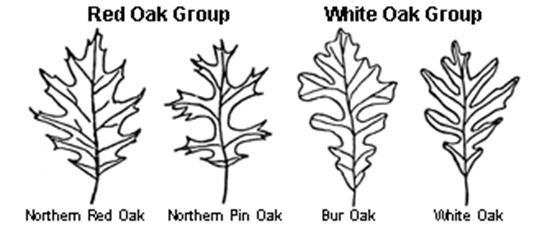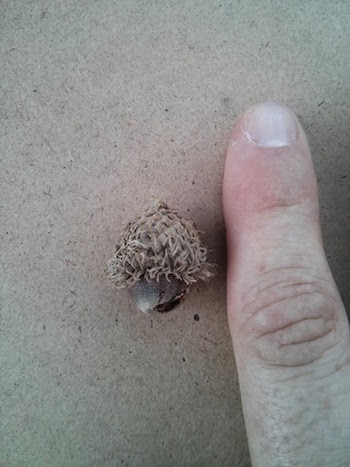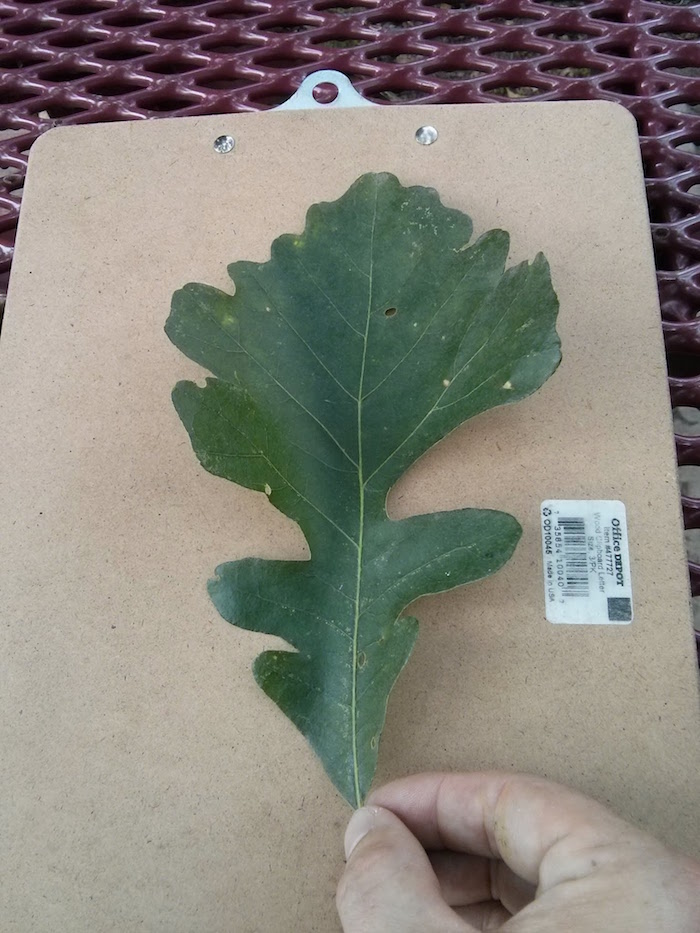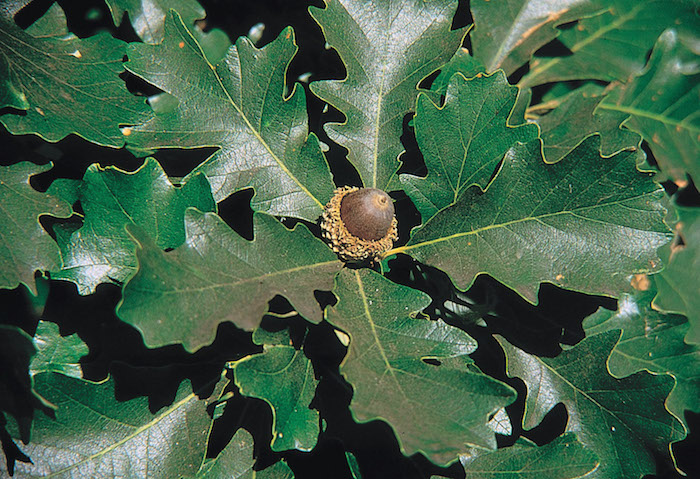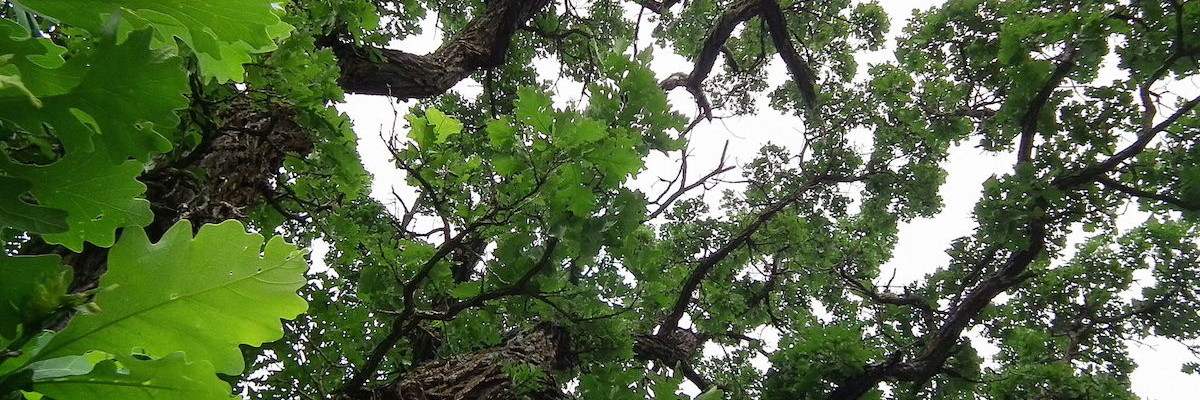
Description:
Bur oak, or mossycap oak, is the most common oak in Minnesota. It is a slow to moderate growing oak in the white oak subgenera, leucobalanus. It has a broad-spreading rounded crown with stout and often contorted and gnarly branches. Bark is dark grey to grey brown and deeply furrowed with age. Leaves have rounded lobes and are fiddle-shaped with 2 to 3 pairs of lobes in the lower portion and 5 to 7 pairs of lobes in the upper portion. Leaves are dark lustrous green above and greyish below in the summer and turn a dull yellow-green to brown in the fall. It is monecious, with male flowers in pendulous catkins and female flowers in clusters on short peduncles at leaf axils. Acorns are stalked and solitary and enclosed by a deep cap that covers 60-80% of the total length of the nut. This cap has distinct fringed awns, which is where it gets its common names bur oak and mossycap oak.
Many people have a difficult time distinguishing among the native oaks in Minnesota. Below is a small comparison guide, but look below in the 'Other Resources' section for a great, in depth comparison from the Eloise Butler Wildflower Garden.
In landscape settings, bur oak is widely used as a park tree or a tree for large spaces. It is generally intolerant of shade, but is quick to rejuvenate when given light and disturbance, especially fire. Because of this adaptation to fire, it is often the dominant tree where prairie grades to forest. In Minnesota, it is most common in the savannas in southern and western counties.
Bur oak is also one of the species included in the University of Minnesota’s Forests and Biodiversity (FAB) experiment at the University’s Cedar Creek Ecosystem Science Reserve. The study looks at the consequences of tree biodiversity in soil, food webs, plant communities, and ecosystems.
Issues:
Bur oak are susceptible to many diseases and pests, including anthracnose, oak wilt, oak leaf blister, bur oak blight, leaf spot, gall wasps, oak lace bugs, leaf miners, borers, and more. Despite its many possible problems, it is generally a low maintenance and long-lived tree.
Other Resources:
Eloise Butler Wildflower Garden Oak Guide
Photo Credit: USDA Public Domain
Photo Credit: Iowa State University
